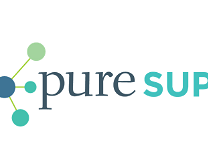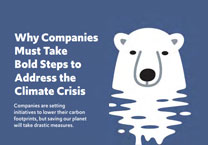Chemical Footprint Project: The next step in reporting
by Tim Greiner
05 January 2015

This article was co-authored with Mark Rossi and Sally Edwards and originally appeared in GreenBiz.
Just as every company has a carbon footprint, every company has a chemical footprint — even companies not in the business of manufacturing and selling chemicals. If you are a retailer, those products that line your shelves are made from chemicals. If you sell services, you have an office with furniture, flooring, supplies and more — all made from chemicals. From changing regulatory requirements and customer demands to negative media attention and product recalls, companies have an increasing obligation to know more about the chemicals in their products and supply chains — to understand their chemical footprint.
The fact that chemicals are the foundation of everything around us presents significant management challenges for businesses that don’t know the chemicals in their products or supply chains, don’t understand the hazards of those chemicals and aren’t aware of the availability of safer alternatives. Increasingly, many companies are developing and implementing policies to better manage chemicals by demanding transparency from their suppliers and asking for safer alternatives to toxic chemicals. Target, Walmart, Staples, Whole Foods Market and healthcare giants Dignity Health and Kaiser Permanente are among the end users of chemicals in products looking to reward suppliers that are proactive in their chemicals management. Yet tangible corporate progress towards safer chemicals is stymied by the lack of a consistent approach.
The simple truth is companies can’t manage what they don’t measure, and currently very few measure their chemical footprint. With growing demand for clear metrics of chemical management performance, chemical footprinting is the imperative next frontier in sustainability reporting, empowering companies to evaluate their progress away from chemicals of high concern to human health or the environment toward safer alternatives.
Now, there’s a way to measure it.
A group of corporate and NGO leaders are supporting the release of a new tool for managing chemicals across supply chains. The Chemical Footprint Project provides the first common metric of its kind for publicly benchmarking companies’ use of chemicals of high concern and their progress in implementing comprehensive chemical management programs. The CFP measures overall chemicals management performance by evaluating how companies answer questions in the following categories:
Management strategy: Measures the scope of corporate chemical policies and their integration into business strategy, accountability and employees’ incentives for safer chemical use, as well as support of initiatives and public policies for safer chemicals.
Chemical inventory: Measures a company’s level of knowledge about the chemicals used by its suppliers in products, components and manufacturing processes, and its systems for managing chemical data and ensuring supplier compliance with its reporting requirements.
Progress measurement: Measures the goals set to reduce chemicals of high concern, progress in establishing a baseline corporate chemical footprint and reducing chemicals of high concern and degree to which alternatives are assessed, identified and implemented.
Public disclosure: Measures whether a company publicly releases the names of chemicals in products and manufacturing, whether it discloses participation in CFP and its answers to these questions and whether the answers have been independently verified by a third party.
Just as companies evaluate their carbon, water and waste footprints, the CFP finally provides a tool that enables purchasers and brands to: benchmark and measure progress towards safer chemicals; recognize and reward suppliers for doing what matters most to retailers and customers; create greater accountability across value chains; encourage chemical information sharing; and provide a metric to compare and measure continuous improvement of suppliers.
Investors are especially interested in CFP because it fills a gaping hole in corporate sustainability assessments. Constantina Bichta of Boston Common Asset Management explained the value of CFP to the investment community: "As investors, we ask portfolio companies to assess chemicals used in their value chain and seek safer alternatives. The Chemical Footprint Project addresses a significant gap in chemicals supply chain assessment, where companies are able to assess chemicals used in supply chain, benchmark their performance relative to their peers and identify areas for improvement."
To ensure its adaptability, CFP involves a wide range of stakeholders. The founders of CFP are the environmental non-profit Clean Production Action, research institute the Lowell Center for Sustainable Production at the University of Massachusetts-Lowell and sustainability consultancy Pure Strategies. Guiding the work of the CFP is a steering committee made up of representatives that include Target Corporation; Staples, Inc.; Boston Common Asset Management; Kaiser Permanente; Trillium Asset Management, LLC; Partners HealthCare; ChemSec; Dignity Health; Environmental Defense Fund; Investor Environmental Health Network; and the U.S. Green Building Council.
The CFP will provide all industry sectors with critical data for making smarter investment and procurement decisions and will identify leaders in business sectors. Not only does the CFP promote chemicals management that better protects human health and the environment, it also creates long-term value for companies and shareholders by enhancing brand reputation, increasing sales, promoting innovative products, increasing supply chain reliability and avoiding the high costs of chemical crises.
“CFP is a market differentiator and provides a competitive advantage for business leaders,” said Roger McFadden of Staples, Inc. “This new tool will add a level of transparency and help companies mitigate reputational and regulatory risks and exploit opportunities afforded by moving to safer chemicals.”
It finally establishes a meaningful measurement of overall corporate performance and creates a framework to make more efficient progress to safer chemicals in products and supply chains.
Written by Tim Greiner
Tim Greiner, a Pure Strategies Co-founder and Managing Director, has pioneered approaches to building environmental and social integrity into products, brands, and businesses. He is also a co-founder of the Chemical Footprint Project and has guided sustainable chemicals management strategies for companies across diverse industries. His experience spans the spectrum from developing sustainability strategy, drafting sustainability goals, designing product sustainability programs, creating approaches to transform sustainable supply chains and facilitating a landscape level stakeholder process to improve climate and water quality outcomes.
Tim's recent projects include helping build a leading climate strategy for Ben & Jerry's, developing sustainability goals for King Arthur Baking, creating a corporate sustainability strategy for Lush, and developing a regenerative grazing standard for Timberland.












